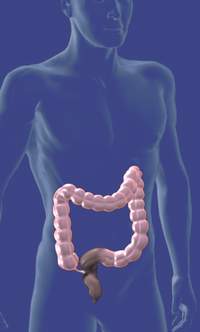Anal fissure: Rectum's most terrible and dangerous disease
In terms of prevalence, an anal fissure is the No 3 disease of the rectum, next to chronic constipation and hemorrhoids, which top the list. Most anal fissures occur when the anal mucosa is stretched beyond its capacity. The causes include straining to defecate, especially if the stool is hard and dry, and severe and chronic constipation. An anal fissure usually measures 1-1.5 cm in length, 3-5 mm in width and 2-3 mm in depth.

The pain caused by a deep chronic fissure is even more excruciating that that associated with a sore tooth. It can last for several hours, thus turning the patient into a living wreck with bloodshot eyes – the patient is unable to sleep a wink. The patient shudders every time he thinks about his next bowel movements, and therefore he makes an effort to delay defecation for 2-3 days. As a result, constipation gets increasingly prolonged and the patient’s sufferings intensify.
The accumulation of fecal matter in the colon gives rise to the formation of toxic substances (indole, skatole) which cause nausea, dizziness, weakness and allergies. In more complicated cases, an anal fissure may lead to the development of an anal fistula, which results in the moistening of the skin around the anus and severe itching in the same location.
Failure to seek timely treatment of an anal fissure may result in the development of an ulcer, which would be a lot more difficult to cure. Besides, chronic constipation often leads to colitis (inflammation of the colon) and other diseases of the intestine.
It should be noted that a prolonged stasis of fecal matter may give rise to the formation of polyps in the rectum. In some cases polyps will have to be removed surgically.
The symptoms of anal fissure are as follows:
Acute pain in the anus during, and especially after, defecation.
Spasm of the internal sphincter muscle
Blood on the stool (or a few drops of blood on toilet paper or toilet bowl)
As a rule, treatment of anal fissures at an early stage does not require hospitalization. The patient, however, is strongly recommended to follow the guidelines:
- Refraining from drinking alcoholic beverages;
- Refraining from eating spicy or salty food and food cooked by frying;
- Steering clear from lifting up heavy objects;
- Treating constipation and diarrhea promptly
An analgesic suppository should be inserted in the anus 30 minutes – 1 hour prior to a time when the next bowel movements are expected to occur. Use an enema (about half a liter of cool water) to remove feces if the suppository fails to have an effect. Lubricate the end of the tube with Vaseline and pass the tube gently into the anus by pressing it against the side of the anus which is unaffected by an anal fissure.
Wash the anus with tepid water and soap following defecation. Another analgesic suppository should be inserted into the rectum. Then use a spanking clean basin for taking a hip-bath.
A hip-bath will require warm water (38-40 degrees Celsius) with a dab of potassium permanganate. The water should be colored light pink. Use toilet paper for wiping the anus с lean and apply prescribed ointment after taking the bath for 10-15 minutes.
A small tampon moistened with the oil of dog rose or sea buckthorn is inserted into the rectum and left overnight. Treatment lasts for 2-3 weeks and can be repeated in a week’s time or ten days if need be. Apart from the above, a doctor may prescribe analgesics and sedatives, depending on the condition of a patient. Surgical intervention may be required for deep anal fissures unresponsive to conservative measures.
Translated by Guerman Grachev
Pravda.ru
Subscribe to Pravda.Ru Telegram channel, Facebook, RSS!


